Sun glint and calm winds
True-color imagery from the VIIRS Today website, below (click here for a direct link to the image below at the VIIRS Today site), shows an unusual sunglint pattern over the eastern Gulf of Mexico, to the southwest of the Florida peninsula. Typically, sunglint features are fairly wide in VIIRS imagery, as evidenced from this Suomi-NPP image, also from 2 August, but to the east of Florida. However, the winds over the eastern Gulf were very light on 2 August, so surface wave action was reduced. When the ocean approaches glassy calm, solar reflection becomes more unidirectional, and a brighter spot becomes visible in True-Color imagery. When seas are choppier (as was the case to the east of Florida), solar reflection off the ocean is diffuse, and a less concentrated region of brightness results. An good analogy might be reflection off flat aluminum foil (representing a flat sea state) or very crinkled aluminum foil (representing an agitated sea state).
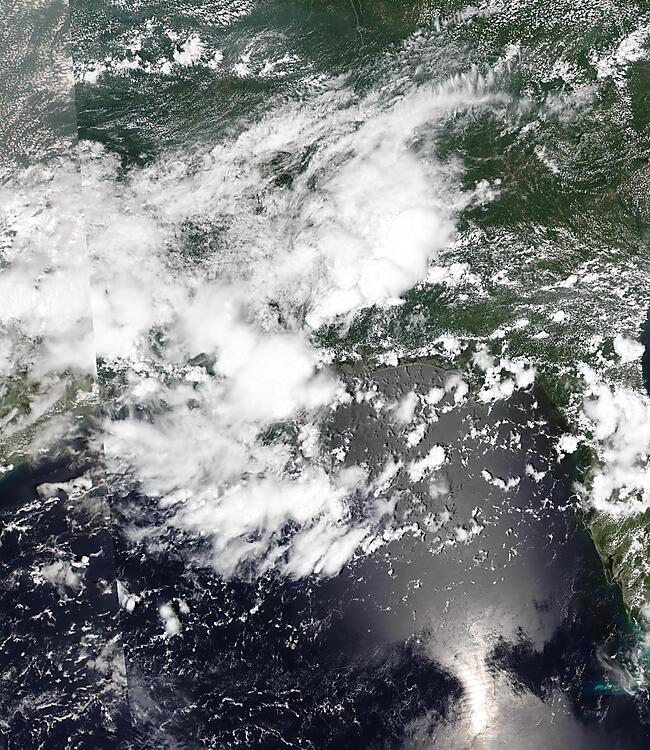
What evidence is present of light winds? Consider the Metop-A Scatterometry image, below, from this site. Both the ascending pass (about 0145 UTC) and descending pass, below (about 1410 UTC; orbit imagery available here, from this site) show very weak winds over the Gulf to the southwest of Florida.
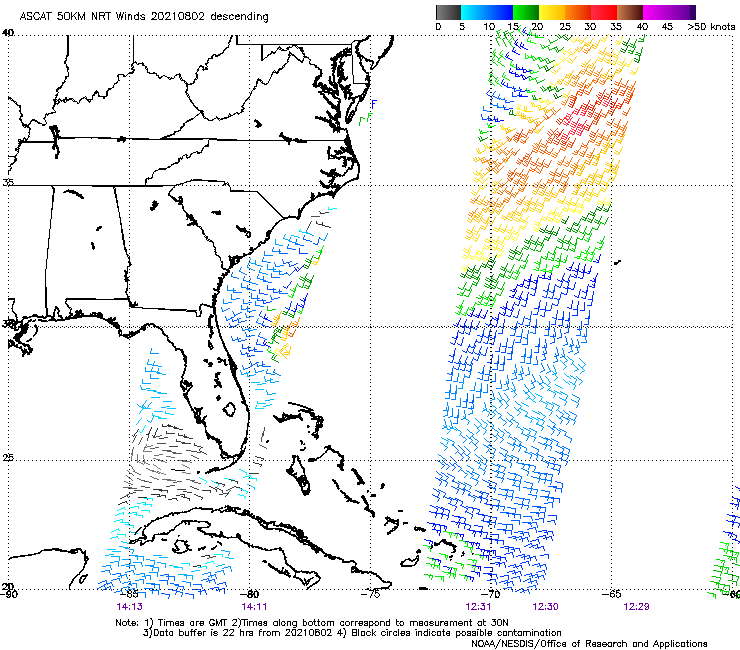
The effect of the sun glint occurs in both visible and shortwave infrared channels. The imagery below, downloaded from the CIMSS Direct Broadcast ftp site (https://ftp.ssec.wisc.edu/pub/eosdb/j01/viirs/, from this ephemeral site — https://ftp.ssec.wisc.edu/pub/eosdb/j01/viirs/2021_08_02_214_1837/images/ — in particular), shows the five Image bands from VIIRS, a prominent signal is apparent in all but the longest wavelength.
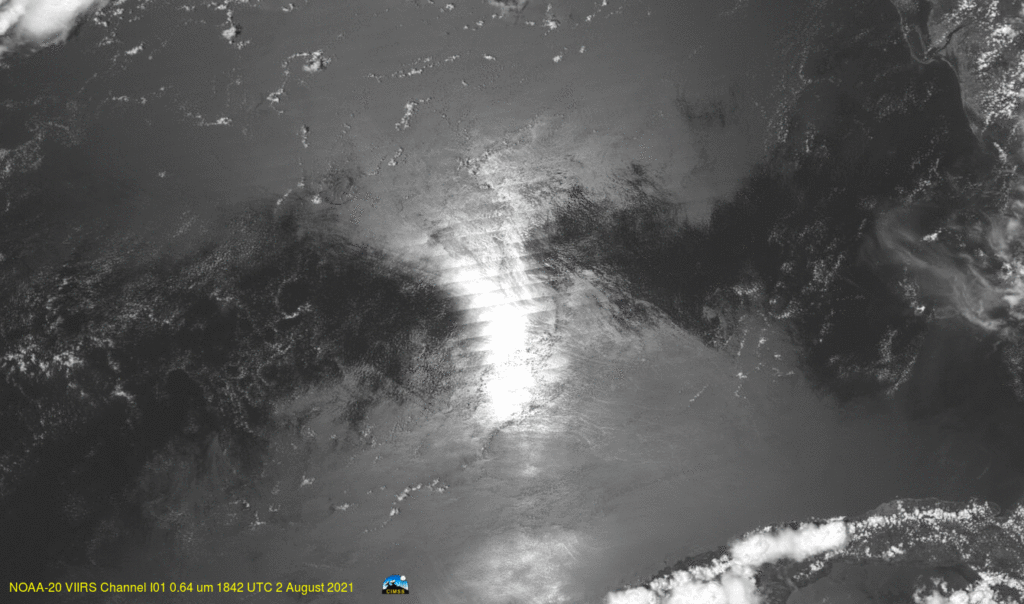
Does the sunglint affect products? The Cloud Mask product is tricked by the large reflectance into believing a cloud is present, as highlighted by the box below. The image also includes Cloud Type and Cloud Phase. Because liquid water clouds are believed present, the ACSPO Sea-surface temperature algorithm (at bottom) produces no values in that region. Careful inspection of the image, however, shows marginally warmer waters (a lighter pink color is apparent) adjacent to the sunglint where the lack of wind means surface mixing of waters is suppressed and a thin layer of very warm water can develop on the top of the ocean.
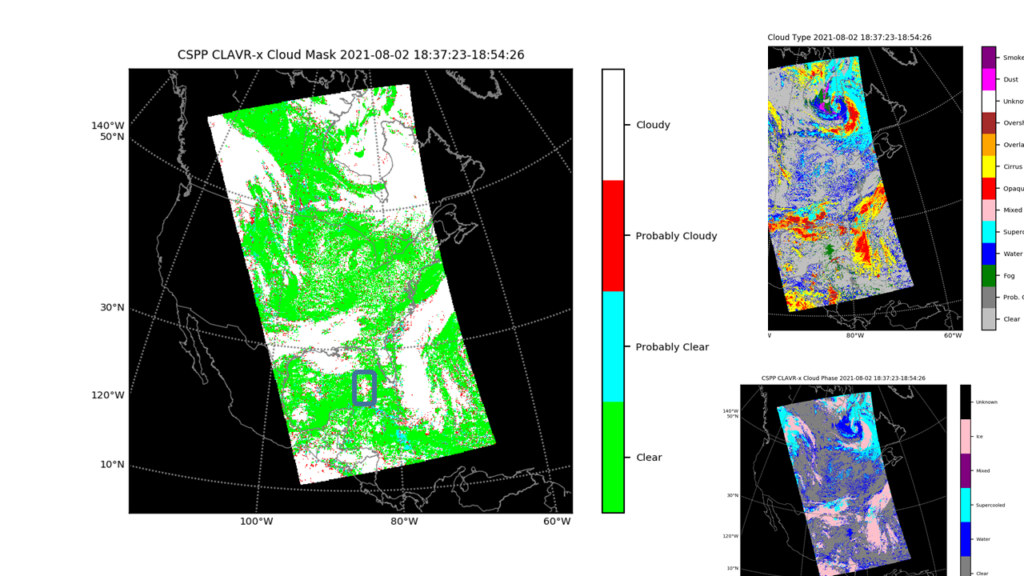
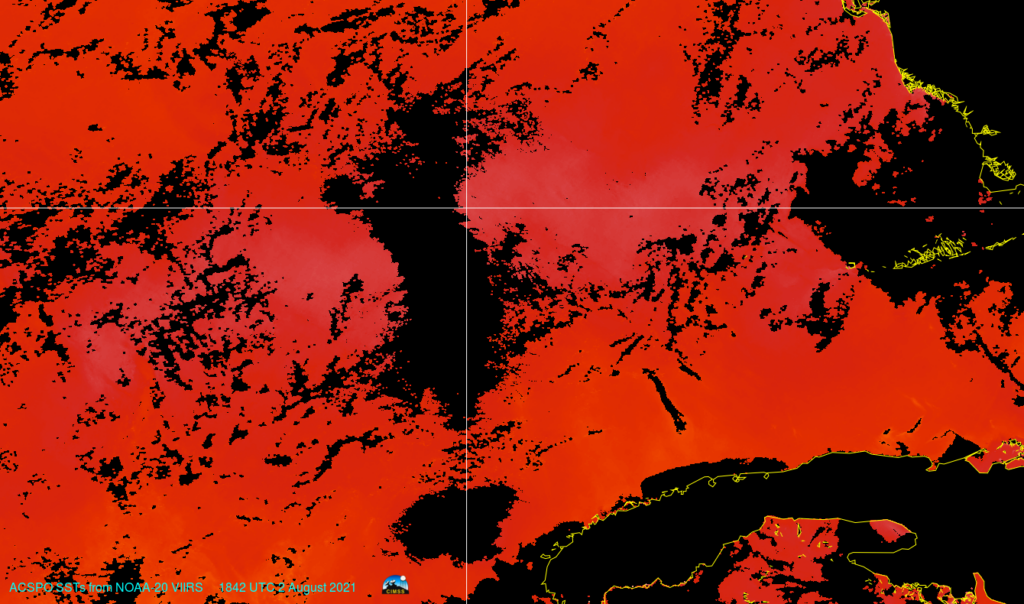
This animation steps through all the VIIRS M-bands. The sunglint is apparent in nearly all of them, except for wavelengths longer than 4 µm. The sunglint is also missing from the 1.38 µm (M09) imagery because of strong absorption of energy at that wavelength by water vapor.
Other examples of diagnosing areas of light winds over water (via a lack of sunglint or moonglint) can be found here, here, here and here.

